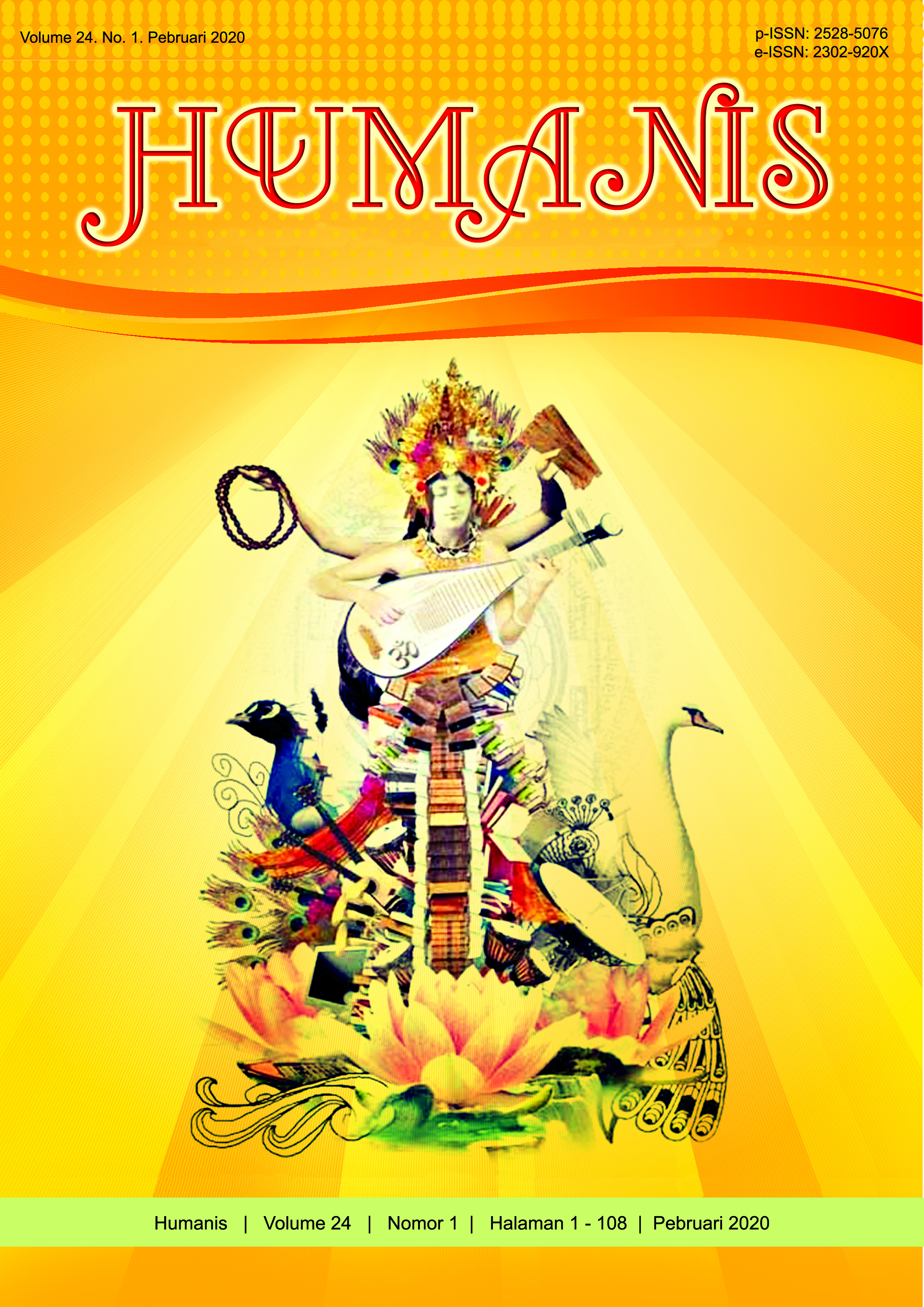Aspek Fukugoudoushi Kiru Nuku dan Toosu dalam Kalimat Bahasa Jepang Sehari-hari Oleh Orang Jepang di Bali
Abstract
The tittle of this research is ”the aspects of compound verb kiru, nuku, and toosu that used in daily japanese by Japanese people in Bali” that aimed to research the form, type, grammatical meaning and substitution of compound verb kiru, nuku, and toosu in daily Japanese that used by Japanese people in Bali. This research was analysed using descriptive method, formal and informal technique. Form and the type of compound verb kiru, nuku, and toosu reference analysis used syntax theory by Chaer (2012). Compound verb comprehension refers to Takanao (1984). Grammatical meaning was analysed using grammatical verb theory by Pateda (2001) and grammatical meaning concept of compound verb kiru, nuku, toosu by Kurita (2015), Himeno (1980), Yoshiyuki (1977) dan Kindaichi (1976). Result of this reasearch is compound verbs kiru, nuku and toosu can form continous, repetitive and prefective aspects when combined with another verbs that showing aspect and used in renyoukei form. These verb should be keizoku doushi, shunkan doushi and joutai doushi. Based on analysis result, compound words kiru, nuku, and toosu in Japanese grammatically means event ended intentionally, event occured unexpectedly, event as the lastest limit, and activity is carried out continuously until finished. Based on the analysis result known that compound verb kiru, nuku, and toosu have the same grammatical meaning and should be substituted. Viewed from japanese grammatical perspectives, the compound verbkiru, nuku, and toosu explained the event carried out continuously until the end and explained that the activity done repeatedly until finished.
Downloads
References
Comrie, Bernard.1976. Aspect. United Kingdom: Cambridge University Press.
Dewi, R.N., 2013, Abstrak Jurusan SAT, 3, 1-13.
Diyah Ratnasari, A.A., 2017, Aspek Inkoatif dalam Novel Absolute Duo, Humanis, 20, 50-55.
Dwi Antari, Ni Kadek Nomi., 2014, Fungsi dan Peran Sintaksis Pada Kalimat Transitif Bahasa Jepang dalam Novel Chijin no Ai Karya Tanizaki Junichiro, Humanis, 6, 3-4.
Hadi, Sutrisno.1983. Metode Research I. Yogyakarta: Fakultas Psikologi UGM.
Hayashi, Ooki.1990. Nihongo Kyouiku Handobukku. Tokyo: Taishuukan Shoten.
Himeno, Masako.,1980, Fukugoudoushi ~Kiru, ~Nuku, ~Toosu, Nihongo Gakkou Ronshuu, 7, 23-46.
Kindaichi, Haruhiko.1989. Nihongo Doushi no Asupekuto. Tokyo: Mugi Shobo.
Kindaichi, Haruhiko.1976. Kokugo Doushi no Ichi Bunrui Nihongo Doushi no Asupekuto. Tokyo: Mugi Shobo.
Kurita, Nami.2015. Discriminating The Synonymous Expression “~Kiru”, “~Nuku”, and “Toosu”Based on the BCCWJ. Tokyo: Kokuritsu Kokugo Kenkyuujo.
Laksmi Prema Dewi, L.P., 2016, Types of Word Formations on Instagram Hastags, Humanis, 16, 104-107.
Novita Sidupa, J., 2015. Compound Word Formation in Matilda, Humanis, 11, 3-5.
Pamugari, A., 2014, Jurnal Ilmiah Mahasiswa FIB, 5, 1-3.
Pateda, Mansoer.2001. Semantik Leksikal. Jakarta: Rineka Cipta.
Rahmi, N.A., 2015, Analisis Makna Fukugoudoushi ~Dasu, ~Hajimeru dan ~Kakeru dalam Novel Taira no Masakado Karangan Eiji Yoshikawa, Artikel Ilmiah Mahasiswa Sastra Asia Timur, 2, 4-10.
Segara, M.B., 2013, Form, Function, and Meaning of “Over” and “Above”, Humanis, 3, 4-8.
Sudaryanto.1993. Metode dan Aneka Teknik Analisis Bahasa. Yogyakarta: Gadjah Mada University Press.
Terada, Takanao.1984. Chuugakusei no Kokubunpoo. Tokyo: Shoryudo.
Turangan, K.A., 2017, Compound Words in BBC News Website, Humanis, 18,155-157.
Umami, R., 2014, Makna Imperatif Yang Terkandung Pada Iklan Kosmetik Berbahasa Jepang dalam Majalah “Popteen”, Artikel Ilmiah Hasil Penelitian Mahasiswa Jurusan Sastra Asia Timur, 3, 1-3.
Wahyu Cipta Widiastika, I Wayan., 2016, Penggunaan Fukushi “Omowazu, Tsui dan Ukkari” dalam Bahasa Jepang Sehari-hari oleh Orang Jepang di Sisi, Pengosekan, Ubud Tinjauan Sintaksis dan Semantik, Humanis, 17, 124.
Yoshiyuki, Morita. 1977. Kiso Nihongo. Toktyo: Kadokawa Shoten


















